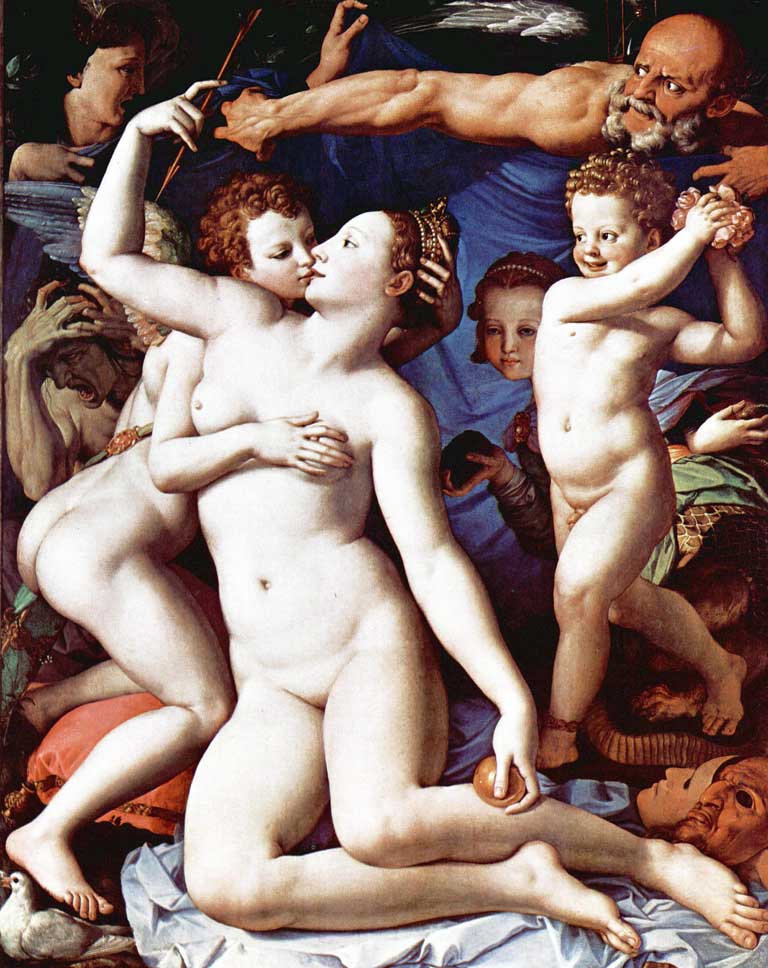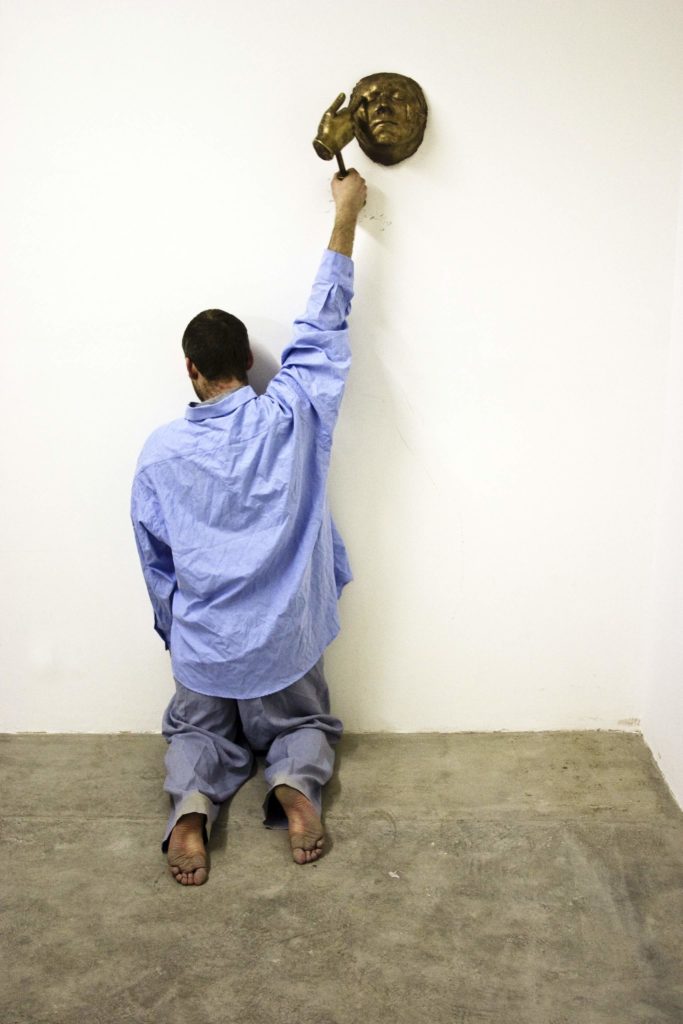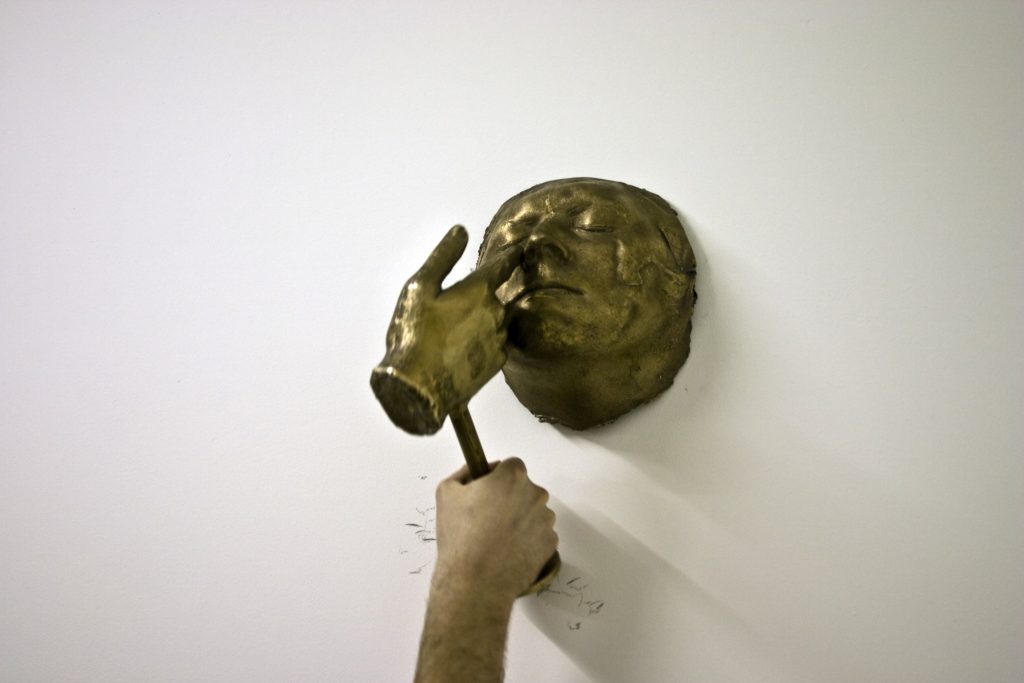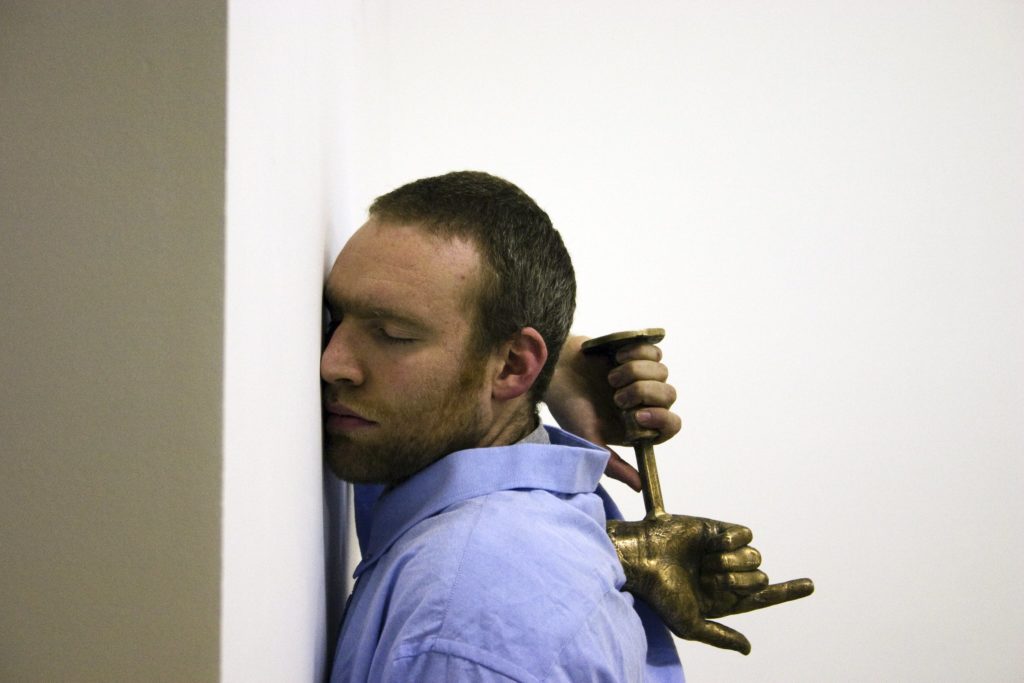Allegorical Character. Part 1, James McCann
Здесь я говорю об аллегорическом персонаже. Я изучал тему аллегории в течении пяти лет. Хотя это историческая тема, я думаю это имеет отношение к современном искусству.
This is a contextual research piece about Allegory as a field of Art Historical Study and as a Methodology for Contemporary Practice. I am going to allow myself to be loosely associative with these texts. For one, I feel this befits the subject matter, and secondly one of the frustrations I have had in this research is trying to compartmentalise this amorphous subject while retaining its obliqueness and interconnectivity. It is a complex subject and one that is not easily defined, that being said I though as an introduction I would focus on the idea of ‘Allegorical Character’ as it relates particularly to the field of Performance Art.

Bronzino’s Painting Allegory of Venus and Cupid is always an excellent referent when beginning as discussion about Allegory as a subject. Although it is a work saturated with referent and disparate elements, it’s over all ‘meaning’ remains obfuscated largely by means of its excesses. This is illustrative of two important facets of Allegorical discourse, one is the concept of what Walter Benjamin would term the ‘constellational image’; Benjamin makes reference to the mosaic, as being a process by which an image holds an imagistic totality while simultaneously, still retaining the individuality of all its constituent parts. This theory of the ‘constellational image’ and simultaneity, is used by Benjamin to undermine the theory of romantic art as ‘the symbol’ which holds a fixed meaning through the passage of time. The Allegorical Image is a literary image if not a literal image, obfuscation and decipherment are an essential part of its construction as well as it’s reception. The relation of The Artist or Allegorist to the Image is further developed by Benjamin through the figure of ‘the alchemist’ and most evocatively in the construct of ‘The Alchemists Liar’ which quite obviously doubles here as ‘The Artists Studio’.
The second pillar of allegorical discourse made stark in this painting is the problematic question of ‘allegorical agency’. Meaning, what are the confines and limitations of the fictive allegorical world in lived reality? How is idea embodied? How does Man become Idea and vice versa? This proximity of the fictive to ‘the real’ is one of the formative questions of literary theory, one of the many fields in which allegory is discussed. It is also a question that highlights much of the religious significance of allegory. Of course for Catholicism the Deification of the Saints, or Eucharistic Transformation are not Allegorical processes, but for myself, as a Performance Artist, these questions are illustrative of the fascinating dynamic between The Idea and The Real.
Performance Art is a unique context in which the relation between the fictive and real world agency are muddied, the idea and the ‘embodied’ live event indistinguishable. The figurative depictions of Allegorical characters in the above Bronzino painting are fascinating, particularly ‘Deception’ hiding behind the cherub, her hands are on the wrong way and her head seems to be detached or in some regard, floating. The second character I would draw your attention to is ‘Oblivion’ in the top left hand corner, whose head appears to be disintegrating. Deception and Oblivion, a perfect microcosm of a critical mode which avoids definition at all costs but more than any other bends toward destruction and madness.
At the risk of going on too long I think I may continue this exploration of ‘Character’ into my next post. Here are some images of a Performance piece I made while thinking about these issues of embodiment and idea. The piece consists of banging bronzes together, a kind of finger hammer poking this face, reminiscent of a death mask, in the eye. I was thinking about George Orwell in 1984, saying the future was a boot kicking a human face for eternity. This crude joke, the temporality of bronze pointing to eternity, and of the imminence of performative action combined for this work.



You Might Also Like:
Van Luong (1)
 Kjell Zillen (4)
Kjell Zillen (4) Mels Dees (9)
Mels Dees (9) Gao Yu (4)
Gao Yu (4)Katya Lebedev (1)
Juan Dies (1)
 Anastasia Prahova (2)
Anastasia Prahova (2)Nena Nastasiya (7)
Taarn Scott (6)
 Cynthia Fusillo (20)
Cynthia Fusillo (20)Roberta Orlando (8)
 Nanda Raemansky (25)
Nanda Raemansky (25) Eliane Velozo (22)
Eliane Velozo (22)Leyya Mona Tawil (1)
Julia Dubovyk (2)
Jianglong (2)
 Iara Abreu (23)
Iara Abreu (23) Agathe Simon (1)
Agathe Simon (1)Rosetta Allan (1)
Elizaveta Ostapenko (5)
 Valentin Boiangiu (2)
Valentin Boiangiu (2) Wesley John Fourie (9)
Wesley John Fourie (9) Renato Roque (3)
Renato Roque (3)Rosa Gauditano (5)
Neerajj Mittra (34)
Ciana Fitzgerald (5)
Boris Moz (3)
 Katerina Muravuova (5)
Katerina Muravuova (5)Kyla Bernberg (1)
 Muyuan He (1)
Muyuan He (1)Liza Odinokikh (2)
 Amalia Gil-Merino (2)
Amalia Gil-Merino (2)Paulo Carvalho Ferreira (6)
 Anastasiia Komissarova (2)
Anastasiia Komissarova (2) Yumiko Ono (1)
Yumiko Ono (1) Stefania Smolkina (1)
Stefania Smolkina (1)Lena Adasheva (1)
 Zahar Al-Dabbagh (1)
Zahar Al-Dabbagh (1) Emily Orzech (6)
Emily Orzech (6) Fernanda Olivares (5)
Fernanda Olivares (5) Noor van der Brugge (3)
Noor van der Brugge (3) Ira Papadopoulou (2)
Ira Papadopoulou (2) Tom Chambers (8)
Tom Chambers (8) Titi Gutierrez (3)
Titi Gutierrez (3) Franz Wanner (2)
Franz Wanner (2) Crystal Marshall (6)
Crystal Marshall (6) Transpositions III (36)
Transpositions III (36) Riddhi Patel (3)
Riddhi Patel (3) Michele Kishita (2)
Michele Kishita (2)Damian Carlton (4)
 Deanna Sirlin (1)
Deanna Sirlin (1) Laura Salerno (3)
Laura Salerno (3) Nina Annabelle Märkl (12)
Nina Annabelle Märkl (12) Elina Fattakhova (1)
Elina Fattakhova (1) Tasha Hurley (1)
Tasha Hurley (1) Ian Hartley (2)
Ian Hartley (2) Laurence de Valmy (2)
Laurence de Valmy (2) Ilia Bouslakov (5)
Ilia Bouslakov (5) Andrea Ahuactzin Pintos (4)
Andrea Ahuactzin Pintos (4) Sveta Nosova (3)
Sveta Nosova (3)Carlos Carvalho (1)
 Maria Timofeeva (1)
Maria Timofeeva (1) Jinn Bug (2)
Jinn Bug (2) Johannes Gerard (3)
Johannes Gerard (3)Irène Mélix (1)
 Aba Lluch Dalena (3)
Aba Lluch Dalena (3) Fabian Reimann (1)
Fabian Reimann (1)Natalia Gourova (1)
 Kate Finkelstein (4)
Kate Finkelstein (4)Raina Greifer (1)
James McCann (2)
Naza del Rosal Ortiz (1)
 Jay Critchley Jay Critchley (1)
Jay Critchley Jay Critchley (1) Vicky Clarke (4)
Vicky Clarke (4) Maria Silva (4)
Maria Silva (4) Shir Cohen (5)
Shir Cohen (5) Peter Shenai (4)
Peter Shenai (4) Bo Choy (4)
Bo Choy (4)Alina Orlov (2)
 Olga Popova (3)
Olga Popova (3) Coco Spencer (2)
Coco Spencer (2) Filippo Fabbri (2)
Filippo Fabbri (2)Daniele Leonardo (5)
 SISTERS HOPE (1)
SISTERS HOPE (1) Scenocosme : Gregory Lasserre & Anais met den Ancxt (4)
Scenocosme : Gregory Lasserre & Anais met den Ancxt (4) Anne Fehres & Luke Conroy (6)
Anne Fehres & Luke Conroy (6) Olesya Ilenok (2)
Olesya Ilenok (2) Marie-Eve Levasseur (4)
Marie-Eve Levasseur (4) Natalia Tikhonova (2)
Natalia Tikhonova (2)Ildar Iakubov (1)
 Evgeniy Lukuta (7)
Evgeniy Lukuta (7) Jarkko Räsänen (5)
Jarkko Räsänen (5)Maria Guta (6)
Egle Kulbokaite Dorota Gaweda (6)
Thomas Kotik (1)
 Andrea Stanislav (3)
Andrea Stanislav (3)Ludmila Belova (1)
Alena Levina (1)
 Ilia Symphocat (2)
Ilia Symphocat (2)Yevgeniy Fiks (1)
Star Smart(Formerly Trauth) (18)
Jyoti Arvey (1)
Les Joynes (2)
 Ekaterina Ivanova (1)
Ekaterina Ivanova (1) Lev Shusharichev (1)
Lev Shusharichev (1)Michael Stebackov (5)
Ryan Griffith (3)
 Masha Danilovskaya (1)
Masha Danilovskaya (1)

